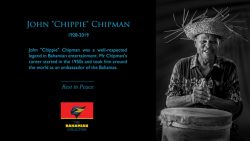Testimony in the murder trial of the Bahamian man accused of slaying a visiting Austrian couple in their hotel room in Bimini last year focused, for the most part yesterday, on DNA evidence collected from the alleged perpetrator and his victims.
A physician and several police detectives who probed the crime scene in room 6 at the Bimini Blue Water Resort in Alice Town took the witness stand and gave testimony in the Supreme Court in Grand Bahama.
Frederick Francis is accused of killing Bernhard Bolzano and his fianc�e Barbara Frelin von Perfall on July 23, 2005.
Dr. Apparao Kolli, a general practitioner at the local clinic in Bimini, testified that he had examined Francis twice on July 26, 2005. Two officers accompanied him, the witness said.
Dr. Kolli told the court that he first saw the accused at noon and at that time did not witness any bruises or scratches on him. He also testified that Francis had appeared normal, very quiet and calm, and cooperative. Dr. Kolli also testified to using a forensic medical examination kit to extract DNA samples from the accused which were sent to a DNA lab to be analyzed.
Continuing his evidence, the doctor told the court that police officers again brought Francis to the clinic for a second examination later that evening at 7pm. The purpose of the visit, he testified, was to prove that while the accused was in custody he was not abused. Dr. Kolli again said there was no evidence of him appearing bruised and classified his demeanor as “normal.”
The witness was the first that the prosecution called to the stand yesterday.
Under cross examination, defence attorney Carlson Shurland asked Dr. Kolli if he was familiar with the term “irresistible impulse,” which was explained as a condition where the person cannot control his or her urge and appears nervous and shaky. Dr. Kolli responded that he was familiar with the condition but said Francis did not appear to exhibit any of those symptoms.
Under further questioning, Dr. Kolli said he asked Francis if he had any problems, to which the accused responded in the negative.
Four officers from the Forensics Lab Unit in New Providence also gave evidence, testifying to the extent of the DNA evidence collected from the victims at the crime scene.
Sergeant Kervin Jones, attached to the Central Detective Unit in New Providence, told the court after viewing the crime scene on July 23, he collected a number of items for processing. The items included pillow cases, gunpowder residue, sheets with suspected blood stains, blood swabs, and unfired ammunition.
In her testimony, Sergeant Veronica Ferguson told the court that on August 10, 2005, she had received DNA samples taken from the bodies of the two murder victims. She also testified that shot shell components called “wadding” were also processed.
Additionally Sergeant Earl Thompson, a firearm expert, also provided insight for the court, testifying about his examination of a Maverick shotgun – allegedly found at Francis� home – bullets and wadding extracted from the victims.
Sergeant Thompson said that the wadding was measured and found to be consistent with those found in the 12 gauge shot shell manufactured by Winchester.
He also told the court that a shotgun test proved that it could discharge a 12 gauge shot shell and thus cause death. Sergeant Thompson told the court that for wadding to be found in a body, it had to be discharged at close range.
Upon cross examination, the sergeant said gunshot residue would be found on the skin of a person who had fired such a weapon. He said a GSR (Gun Shot Residue) test could be performed to determine if there were any such residue.
Responding to whether a GSR test had been performed on Francis, Sergeant Thompson replied that the test is not routinely done because of its cost. He said Francis had not been tested in this way.
The witness added that gunshot residue could be washed off, typically does not last very long and explained that if a perpetuator is not caught in a reasonable time right after committing the crime, then it would be no use in ordering a GSR test, as was the case in this incident.
By: Courtnee Romer, The Bahama Journal



